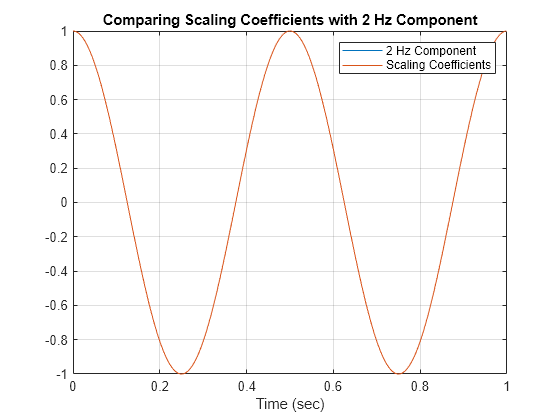wt
Continuous wavelet transform with filter bank
Syntax
Description
cfs = wt(fb,x)x, using fb, a CWT filter bank.
Because the wavelet filters are normalized so that the peak magnitudes for all passbands are approximately equal to 2, a unit-magnitude oscillation in the data shows up with a scalogram magnitude equal to 1.
Examples
Input Arguments
Output Arguments
Tips
The first time you use a filter bank to take the CWT of a signal, the wavelet filters are constructed to have the same data type as the signal. A warning message is generated when you apply the same filter bank to a signal with a different data type. Changing data types comes with the cost of redesigning or changing the precision of the filter bank. For optimal performance, use a consistent data type.
When performing multiple CWTs, for example inside a for-loop, the recommended workflow is to first create a
cwtfilterbankobject and then use thewtobject function. This workflow minimizes overhead and maximizes performance. See Using CWT Filter Bank on Multiple Time Series.



